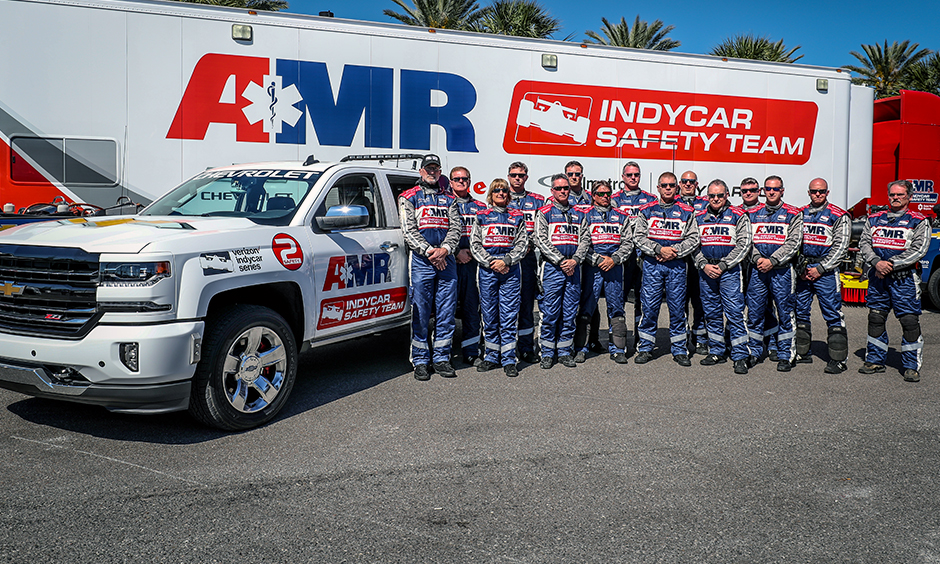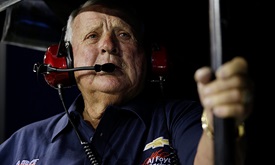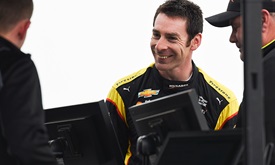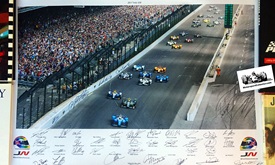Preparation keys success for AMR INDYCAR Safety Team
MAR 17, 2018
As the Verizon IndyCar Series season opened last weekend in St. Petersburg, Florida, with lots of unknowns, one team arrived already in regular-season form.
The AMR INDYCAR Safety Team, the highly respected group of rescue and safety workers renowned for their fast action and life-saving skill, was operating at full speed by the time the first practice laps were turned during the Firestone Grand Prix of St. Petersburg weekend. The safety team, on the scene for every Verizon IndyCar Series and Mazda Road to Indy session throughout the season, conducted its own preseason weeks earlier during a series of meetings, training and hands-on work with the new Indy car.
Twenty-eight AMR INDYCAR Safety Team members, nine physicians and six nurses gathered for a week in January in Speedway, Indiana, to review their work from the 2017 season and explore ways to become better in 2018. As part of the process, they took a long look at the new universal aero kit and how it changes their rescue efforts this year.
That kind of preparation, along with daily meetings during every race weekend with locally based safety teams from the tracks where INDYCAR competes, has established the AMR INDYCAR Safety Team as the best of its kind in motorsports. The safety team responds to incidents on the track – anything from a fluid cleanup to a major crash with life-threatening consequences – with precision and orchestration borne of high-level training and constant refreshers.
“It’s truly a system and it starts long before we get boots on the ground,” said Tim Baughman, INDYCAR manager of track safety. “We flew in the whole team and reviewed the 2017 season race by race. What did we do well? What can we do better? The medical and safety team melded together so they understand that it is a system.
“It’s not what we do in that short window while we are out on the racetrack. What leads to our success is all the work beforehand and all the work afterwards, having just the right people and the right resources at the right time.”
The team looked at changes to the 2018 car, particularly the aero kit and how it affects access to a driver, the ability to extinguish a fire and even how to lift a car for removal from the track. AJ Foyt Racing loaned the safety team a new car that had just returned from a road-course test.
“We used the lift to see if the balance had changed, how it would lift and how it would tow,” Baughman said. “We looked at what the modifications of the sidepods meant to us. Can we stand on this? Can we reach this? How has this changed?
“The car itself is the same (Dallara IR-12 chassis), so we are very familiar with it. Our towing package, how we lift the car, where the fuel is, where the shutoffs are – all of those are similar. It’s that outer shell and those sidepods that we (needed) to become familiar with.”
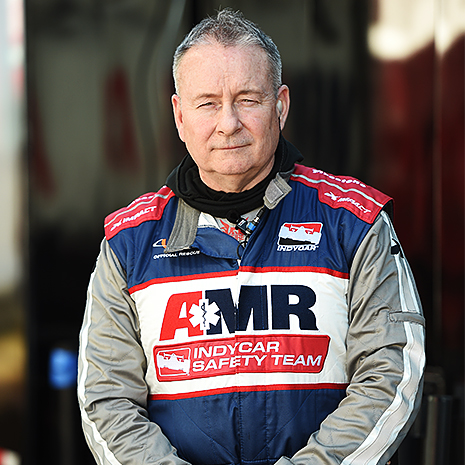 Baughman says the aero kit should allow safety crews better access than the previous version.
Baughman says the aero kit should allow safety crews better access than the previous version.
“We looked at the new cowling that covers the engine and it’s actually easier for us to get in there from behind and put a fire out,” he said. “The underwing that’s under the body is designed for airflow, so because of that it has openings where we can actually get an extinguisher in and put out a small fuel line fire or an oil fire.
“We look at the cars as they change, we look at the sport as it changes, the tracks and the facilities, and we try to stay ahead of it as a team. We think we are in a good place.”
Every second is precious when responding to a crash. That’s why the AMR INDYCAR Safety Team spends so much time training for a duty that’s a well-planned series of actions by men and women whose work may save a life.
“As firefighters and paramedics out on the streets, we try to be there within four minutes,” said Baughman, whose full-time job is as a fire chief in the Indianapolis Fire Department. “At an INDYCAR track, we are trying to be there and be in the (track) hospital (with the injured driver(s)) within two minutes. That’s our goal. We are very proud that we feel like we can get (to an incident), make the assessment, get the driver out of the car, get them into an ambulance, get them to the hospital and sometimes bypass the track hospital and go right to the helicopter to a trauma center if they need that type of surgical care to save their lives. Any delay on the racetrack is time the surgeon won’t have to save that life.”
The team works each race with three Chevrolet Silverado 1500 Crew Cab safety trucks – Safety 1, Safety 2 and Safety 3 – plus a Honda Pilot SUV safety response vehicle.
The trucks carry four team members apiece – a driver/crew leader, a paramedic and two firefighters. Safety 1 and Safety 2 are equipped with a dashboard warning light system, 360-degree camera in the windshield and a rear-facing camera, hydraulic rescue tools, reciprocating saws, firefighting equipment, basic life-support supplies, material for fluid cleanup and 70 gallons of water and cold fire extinguishing material. Safety 3 carries 300 pounds of “oil dry” cleanup material and a hydraulic broom to scrub the oil dry into the track, and a blower to remove the material and debris from the track.
The safety response vehicle carries the INDYCAR medical director, a track doctor/emergency specialist, an orthopedic specialist and a driver with a racing background. That vehicle is fitted with a wireless network laptop computer that allows doctors to immediately download crash data, satellite TV and monitor and medical equipment.
The workers in each safety vehicle have specific assignments, with response protocol varying from ovals to road and street courses.
At an oval, the first truck goes directly to the crash scene to check on the driver and look for fire or fluid leaking. The second truck stops at the point of impact to check on the safety of anyone outside the track and looks for damage to the wall, SAFER Barrier and catch fencing. The third truck also handles cleanup and makes a lap around the racetrack to check for additional fluid and debris.
Officials in Race Control communicate with safety workers on the scene and view live video from the trucks, and call for more equipment as needed – a wrecker, ambulance, track sweepers, jet dryers or vehicles to assist in repairing damaged barriers.
The safety team adjusts assignments when there’s an incident involving more cars than safety trucks, like the five-car crash in Turn 2 near the end of the Indianapolis 500 last year. In that case, the four-person crews split into two-person crews when they reached the crash site.
“Two guys from a truck will go to one car and the other two guys will go to another car,” Baughman said. “With that approach, we can handle up to six cars. And our backup resource at every racetrack – and we cannot do this without them – is that we have trained the local fire response and cleanup and rescue response to back us up.”
Because of the unpredictable nature of an incident, especially a multi-car crash, the AMR INDYCAR Safety Team may need to develop a response plan on the fly. But it doesn’t happen without preparation and experience.
“It goes back to our basic training in mercy medicine. You do a very quick triage,” Baughman said. “We know what to do by looking at the cars and looking at the drivers when the first truck pulls up. We look for driver movement, we look for animation. We may see a driver taking the steering wheel off (a signal to safety workers that the driver feels OK) and drive by that car.
“If they are animated and moving, then they’re probably having a small fire. If we see there is a driver with his head down or on fire, that (safety) truck will drive by everybody else to go to that one first, and then report back on the radio, ‘You take this car, you take that car.’”
Compared with a crash on an oval, where the impact often is greater and the debris field can cover more than 1,000 feet, the safety team’s road-course response often differs, Baughman said.
“Impacts can be significant on a road course, but a lot of the work we do is (for a) single car – spinning out, contact with a barrier,” he said. “Our protocol changes at that point. We send the closest truck possible and they do an assessment. If Race Control sees that it is a major hit, they will send more trucks immediately.”
Each day of every race weekend, the AMR INDYCAR Safety Team meets with the local track’s safety and cleanup personnel – those with the ambulances, wreckers, fire vehicles and sweepers – to ensure they’re all properly prepared.
“They’re all part of that daily briefing to know where they’re going to be, what our expectations are and make sure they have the equipment set for our Indy cars,” Baughman said. “It’s part of that overall system that makes this a success.”
And it’s why the select group of workers with INDYCAR’s safety and medical teams are honored to do this work despite a sizable commitment of time and travel.
“There aren’t too many opportunities to do motorsports safety similar to this one,” Baughman said. “There are a lot of people interested in being on our team. It’s a commitment. You’re giving away your weekends and your family time to be on the road. But probably more important as a firefighter/paramedic is the opportunity to practice at this level, where timing and teamwork and flat skill level is put to test week after week.
“It’s rewarding when things go right and it’s heartfelt when things don’t go well on the racetrack. But that’s a motivation for our people. We work as hard as we can to provide the best response possible.”










